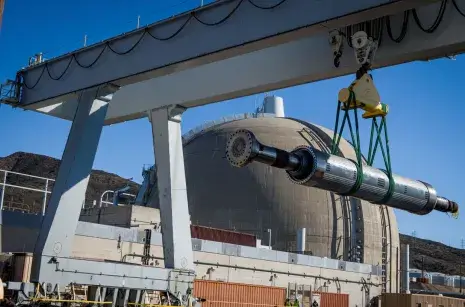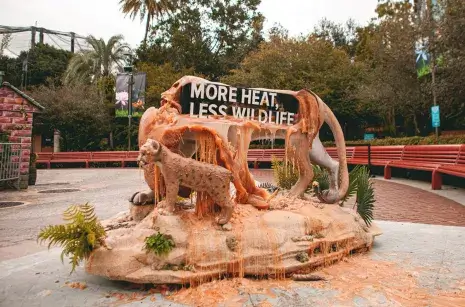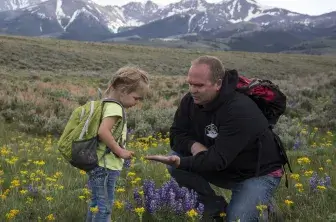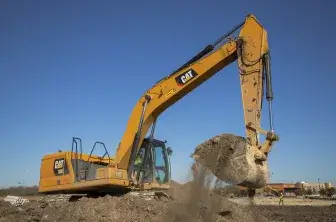Strategy 1: Prioritize Equity, Fairness, and Justice
Build Capacity for Diversity
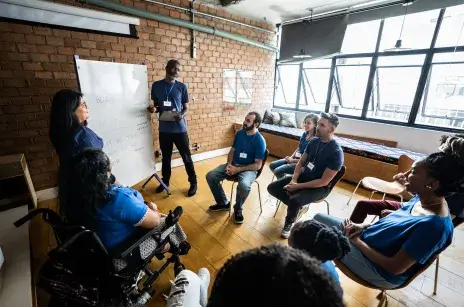
Responding to climate change will require new policies, projects, and investments in communities at the greatest risk for climate impacts. Frontline communities should fully participate in making decisions that affect them. Funding should address improving participation and sharing promising community engagement practices broadly.
Establish positions focused on meaningful community engagement.
Remove barriers to meaningful participation.
Amplify existing guidebooks on promising practices for authentic community engagement and encourage periodic revisions that incorporate input from communities.
More recommendations
Frontline communities are often excluded from public and private project development decision-making, leading to conflict and adverse outcomes for communities and projects alike.[i] These include industrial projects that produce harmful pollutants and land use projects that reduce the overall impacts of climate change yet often harm marginalized communities by increasing local risk, such as sea walls that increase the likelihood and severity of flooding locally.
Environmental justice is not just an outcome but a process that requires meaningful participation across all points of decision-making. Community members frequently possess knowledge or skills that increase the project’s speed and effectiveness or remove issues with implementation, making their input not only ethically important but often crucial to a project’s success. Building capacity means assessing challenges to community member engagement and identifying resources and opportunities to address those barriers. Ultimately, impacted communities should have authority and ownership in project selection, but iterative engagement to strengthen community involvement and build trust are also important initial steps.
Establish positions focused on meaningful community engagement.
Companies and government bodies must create, fund, and maintain positions, such as director of community relations, focused on community engagement and inclusion. Establishing these positions before conceptualizing projects allows for early and ongoing community relationship-building and engagement.
Authentic engagement is built on trust, long-term relationships, and efforts to place everyone on an equal footing. Although engaging with communities can sometimes slow project development, many experts emphasize that this outreach accelerates projects in the long term by avoiding costly missteps and delays. Communities’ experience and local insight can provide a comprehensive view on project cost-benefit analysis.[ii] Companies should create processes that are proactive and participatory, that understand competing priorities, and that provide compensation for the time community members spend offering their perspective. For example, companies such as Southern California Edison have already implemented processes for involving communities throughout the lifespan of their projects, including consulting with communities throughout the planning process and incorporating their feedback.[iii]
Remove barriers to meaningful participation.
Often the biggest barrier to community participation in selecting and codeveloping projects is not interest or insight but navigating the technical issues related to identifying and taking advantage of available funding opportunities. These difficulties can range from internet access to English translation to managing and reporting climate funding and were among the most frequent barriers mentioned by the community engagement experts the Commission interviewed. Communities are often left on their own to make decisions about redevelopment plans, despite the availability of significant federal funding and resources.[iv]
While the solutions that remove these barriers can be straightforward, they require ground-level implementation and demand significant resources. Partnerships between federal agencies, community organizations and other nonprofits, and local universities are crucial. In California, Climate Resolve’s “Ready for Tomorrow” program has secured more than $9 million in climate-related grant funding for local community action, including by providing translation services to Spanish and Chinese communities.[v] In Alaska, the Denali Commission along with the Alaska Federation of Natives and Alaska Pacific University have helped distribute funds and provide project management to rural Alaskan communities.[vi]
Amplify existing guidebooks on promising practices for authentic community engagement and encourage periodic revisions that incorporate input from communities.
Guidelines and successful examples help organizations to learn from prior experiences and integrate diverse voices into decision-making. These examples are necessary for demonstrating that engaging with communities about proposed actions and prioritizing environmental justice will strengthen proposals and improve outcomes; that this is not simply some burdensome and inefficient process. Increasing the visibility of these cases, such as through chamber of commerce gatherings, will encourage businesses and government to integrate environmental justice into their practices.[vii] Philanthropy should support this work by funding periodic assessments to ensure that the guidebooks and promising practices are effective.
Many of these tools already exist. The Environmental Protection Agency (EPA) provides several resources on how businesses can engage with communities, including legal tools that provide information on environmental justice laws.[viii] The Department of Energy (DOE), the Organisation for Economic Co-operation and Development, and independent organizations such as the Electric Power Research Institute have also created and shared similar guidebooks.[ix] These resources provide concrete steps and considerations for those interested in beginning to engage and codevelop climate-related projects with communities. The EPA also provides the EJScreen tool to help identify where frontline communities are located. As guidebooks are revised and new ones created, agencies should seek community input to help make these resources accessible to broad audiences.
[i] Angel Santiago Fernandez-Bou, J. Pablo Ortiz-Partida, Leticia M. Classen-Rodriguez, et al., “3 Challenges, 3 Errors, and 3 Solutions to Integrate Frontline Communities in Climate Change Policy and Research: Lessons from California,” Frontiers in Climate 3 (2021): 717554.
[ii] Maria Tengö, Eduardo S. Brondizio, Thomas Elmqvist, et al., “Connecting Diverse Knowledge Systems for Enhanced Ecosystem Governance: The Multiple Evidence Base Approach,” AMBIO 43 (5) (2014): 579–591, https://doi.org/10.1007/s13280-014-0501-3.
[iii] Anna Valdberg and R. Olivia Samad, “Southern California Edison Company’s (U 338-E) Community Engagement Plan,” May 2021, https://www.sce.com/sites/default/files/inline-files/SCE_Draft_2021_Climate_Adaptation_Community_Engagement_Plan.pdf.
[iv] See Interagency Working Group on Coal and Power Plant Communities and Economic Revitalization, https://energycommunities.gov/.
[v] Climate Resolve, “Ready for Tomorrow,” https://www.climateresolve.org/ready-for-tomorrow/#:~:text=%E2%80%9CClimate%20Resolve's%20Ready%20for%20Tomorrow,to%20address%20the%20climate%20crisis (accessed June 12, 2023).
[vi] The Denali Commission, Denali Commission Strategic Plan FY 2018–2022 (Anchorage: The Denali Commission, 2017), https://www.denali.gov/wp-content/uploads/2018/03/Denali_Commission_FY2018_-_2022_Strategic_Plan_-_Final_Executed_document_-_10-4-17.pdf.
[vii] U.S. Environmental Protection Agency, Pacific Southwest/Region 9 EPA-909-R-09-001, Environmental Justice Resource Guide: A Handbook for Communities and Decision-Makers (Washington, D.C.: U.S. Government Printing Office, 2008), https://files.dep.state.pa.us/environmentaled/Environmental%20Education/EnvEdPortalFiles/ej-resource-guide.pdf.
[viii] U.S. Environmental Protection Agency, EPA Legal Tools to Advance Environmental Justice (Washington, D.C.: U.S. Environmental Protection Agency, 2022), https://www.epa.gov/system/files/documents/2022-05/EJ%20Legal%20Tools%20May%202022%20FINAL.pdf; and U.S. Environmental Protection Agency, “Superfund Community Involvement Tools and Resources,” https://www.epa.gov/superfund/superfund-community-involvement-tools-and-resources (accessed June 12, 2023).
[ix] U.S. Department of Energy, “Creating a Community and Stakeholder Engagement Plan,” August 2022, https://www.energy.gov/sites/default/files/2022-08/Creating%20a%20Community%20and%20Stakeholder%20Engagement%20Plan_8.2.22.pdf; World Bank Group, A Guide to Community Engagement for Public-Private Partnerships (Washington, D.C.: World Bank Group, 2019), https://ppp.worldbank.org/public-private-partnership/sites/ppp.worldbank.org/files/2020-02/A%20Guide%20to%20Community%20Engagement%20for%20Public-Private%20Partnerships%20-%20Draft%20Discussion%20June%202019.pdf; Electric Power Research Institute, “Environmental Justice and Renewable Energy and Storage,” Technical Brief 3002024572 (Palo Alto, Calif.: Electric Power Research Institute, 2022), https://www.epri.com/research/products/000000003002024572; and Organisation for Economic Co-operation and Development, “Policy Brief 1: The Holistic Toolbox for Private Sector Engagement in Development Co-operation” (Paris: Organisation for Economic Co-operation and Development, 2016), https://www.oecd.org/dac/peer-reviews/private-sector-engagement-for-sustainable-development-lessons-from-the-dac.htm.



